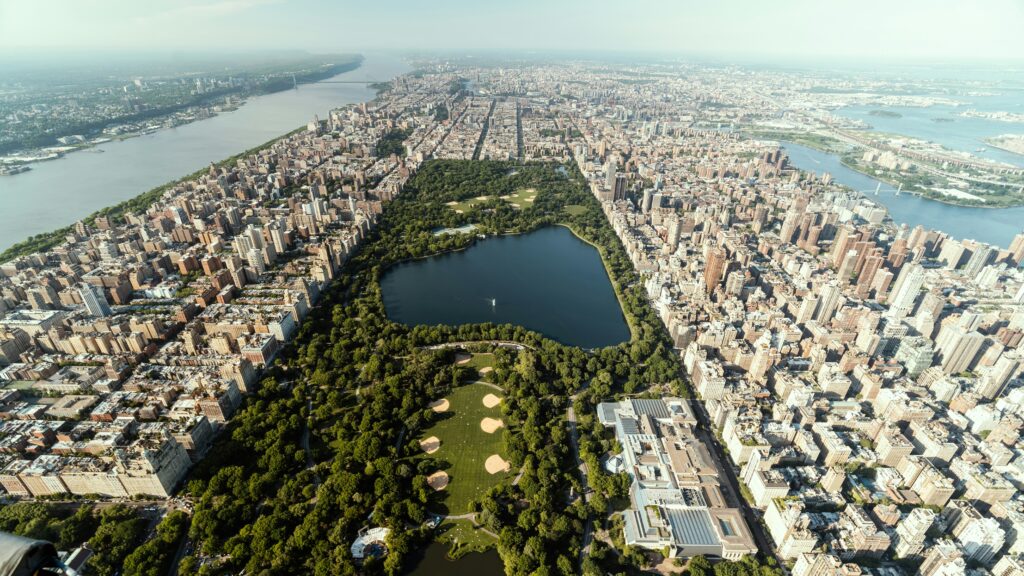Convening to catalyse change: fashion’s call to embrace climate week


The climate catastrophe is no distant threat, 2023 marked the Earth’s hottest year ever recorded in human history and extreme weather events are increasingly shaking our sense of stability. With almost half of the global population living in areas where they are highly vulnerable to climate change and entire ecosystems under threat, the need for action is more urgent than ever. Yet, the fashion industry—a sector that contributes up to 4% of global greenhouse gas (GHG) emissions—has historically remained on the periphery of climate action discussions. This needs to change, and events like New York Climate Week represent an important opportunity to redefine the industry’s role in the global climate fight. These gatherings are not merely an opportunity for the industry to reflect on its shortcomings but are crucial spaces for collaboration, storytelling, and, ultimately, impact. In the coming days over a thousand of the most influential leaders from business, government, and the climate sector will descend on New York City to find innovative solutions to combat climate change.
Critics may dismiss these events as platforms for hollow promises rather than substantial change, but such criticism, though grounded in understandable frustration, sometimes misses the bigger picture. Sustainability summits provide a unique forum for voices from across the value chain to come together, share innovations, and chart a path toward sustainability. These forums can help bind fragmented efforts into a cohesive movement for change. Fashion must seize these opportunities to transform awareness into meaningful implementation.
Set to become a trillion-dollar industry by 2027, fashion holds cultural, social, and economic power, with its supply chains spanning continents and its products touching nearly every corner of the globe. However, this influence comes at a steep environmental and social cost with the industry contributing to widespread water pollution, climate change, deforestation, social justice violations, and waste generation.
Feeling disappointed by the realities of the meaningful progress (or lack thereof) made from these global conferences is discouraging at times. However, it is important to acknowledge the impressive strides that have been made in the fashion sector through convening moments, such as binding agreements on wages, meaningful reparative financing models, influential and mandatory legislation. Global Fashion Agenda has been laying the foundations for such developments since the inception of its Global Fashion Summit in 2009, which would not have been possible without events serving as an incubator for scalable solutions.
An undeniable challenge for these events is the carbon emissions associated with international travel. However, the opportunity for human connection is critical for building alliances, making decisions, and manifesting commitments. The collaborative energy that sparks in these face-to-face meetings can spur actions that ripple out across industries. For this reason, accessibility and the representation of all stakeholders, regions, and voices is of paramount priority.
If we reflect upon global climate forums like COP, progress is incremental and often moves slowly but has lasting impacts that reverberate far into the future. These conferences continually face criticism that they are nothing more than diplomatic theatre, yet they have laid the groundwork for breakthroughs such as the Kyoto Protocol in 1997, which established legally binding limits on greenhouse gas emissions. The Paris Agreement of 2015 was another milestone, committing nations to limit global warming to well below 2°C, with efforts to stay below 1.5°C. Whilst the reality of “keeping 1.5° alive” is precariously uncertain, the agreement has undeniably galvanised action around the world, setting the stage for national climate plans and mobilising billions in green investments. While conferences may not immediately deliver radical change, they serve as critical touchpoints for building consensus, developing policy frameworks, and propelling momentum forward.
One of the most important takeaways from events like Climate Week is the need for cross-sector alliances. Fashion doesn’t exist in a vacuum but rather it is inextricably interlinked with industries such as agriculture, manufacturing, logistics, and transportation, all of which contribute to its carbon footprint. Solving fashion’s sustainability challenge will require breaking down silos and forming alliances across sectors, and presence at global forums like this allow us to do so. The fashion industry can no longer afford to operate as a fragmented, isolated entity if we are to meet the ambitious goals set by the Paris Agreement, the Fashion Industry Charter, and other climate initiatives.
The time for complacency has long-since passed. The dialogues happening at Climate Week are not simply rhetoric; they are the scaffolding upon which we will build the future of fashion that respects people, the planet, and prosperity in equal measure. Although fleeting events alone cannot be relied on as the solution to entirely transform the climate’s trajectory, they serve as a crucial tool to foster transformation. Beyond these days, the global community works tirelessly throughout the year to implement initiatives to drive action further, with climate gatherings offering vital moments to reenergise these efforts.